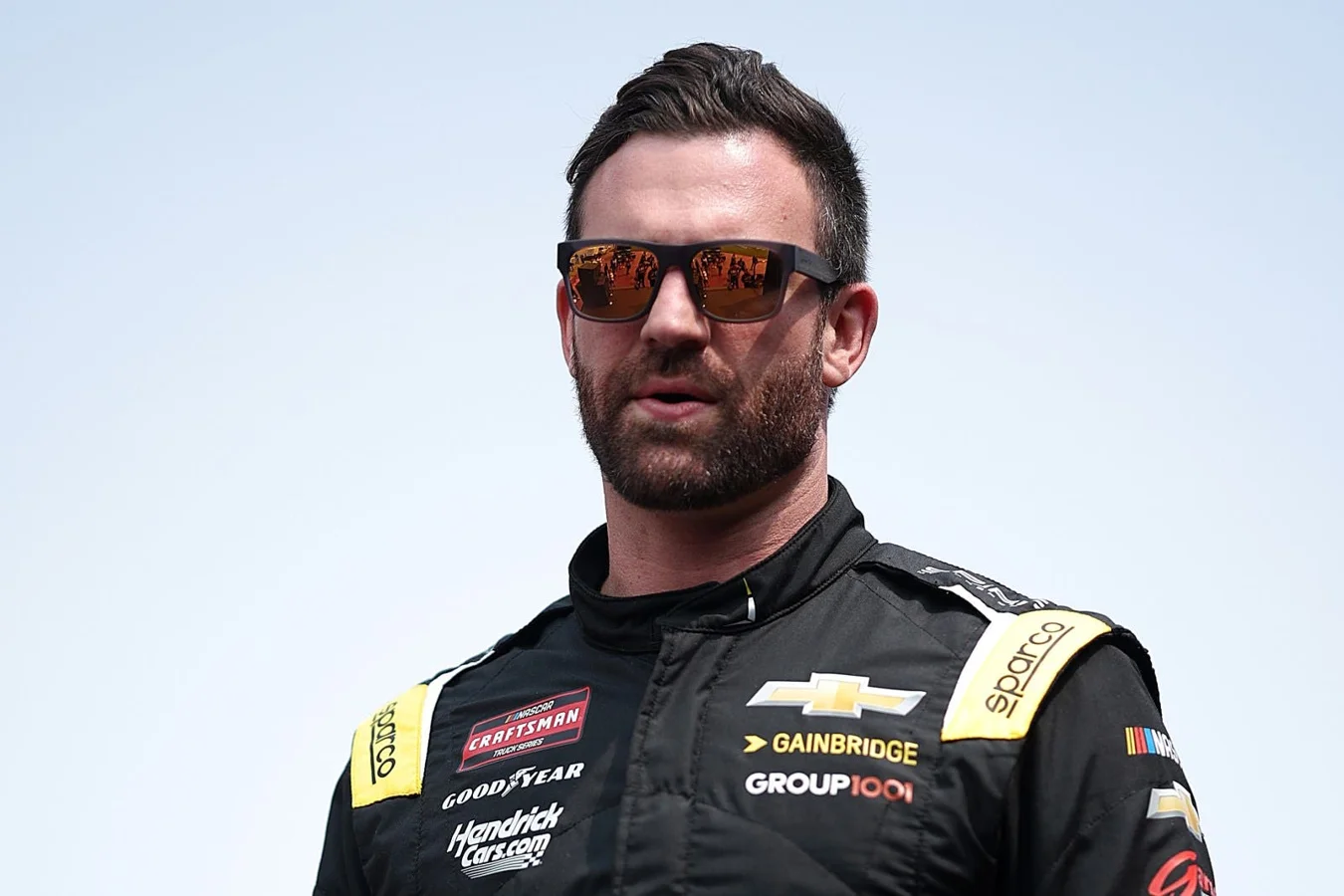Amid the ongoing NASCAR Cup Series playoff stretch, concerns about falling television numbers have gripped the sport, with Corey LaJoie stepping into the center of the heated NASCAR ratings debate. As the season continues to post audience lows, particularly during high-stakes races, LaJoie’s candid remarks have amplified a wider discussion about the future of racing viewership and the many factors driving the downturn in ratings.
NASCAR’s Audience Shrinks During Crucial Playoff Stretch
This year’s NASCAR Cup Series playoffs have marked a troubling first: no postseason race has cracked two million television viewers. Ryan Blaney’s win at New Hampshire’s Mobil 1 301 was watched by just 1.29 million viewers, the lowest mark so far this season. It was also the fourth consecutive playoff event to stay below the two million threshold, a milestone previously considered routine in NASCAR’s history.
Fan conversations on social media have grown increasingly tense, debating the underlying reasons for NASCAR’s waning audience. Blame has been cast in many directions, including the playoff race format and the impacts of the Next Gen car on competition. The debate has only intensified as NASCAR faces stiff competition from NFL games in the fall and as Formula One gains popularity among American audiences.
One fan offered a visual critique of the ongoing back-and-forth by posting an image of a futuristic skyline, captioned:
“NASCAR Twitter when people finally realize that ratings are affected by a multitude of factors in an everchanging world and that there is no one-trick solution to making everything better over night.”
Corey LaJoie’s sharp reply followed:
“The moment of realization will never remotely come close to happening.”
LaJoie’s forthright comment reflected frustration with the repetitive cycle of blame and speculation. The sport is contending with a combination of shifting fan habits, increased sports competition, and changes within the racing itself. Recent viewer totals for major playoff races have underscored the troubling trend—Gateway and Bristol each hovered around 1.53 and 1.54 million viewers, respectively, while Loudon slipped even further.
What’s Fueling the Decline? Competing Sports and Changing Tastes Shape the Audience
Formula One’s surge in U.S. popularity has markedly shifted motorsports fan demographics, with younger viewers increasingly tuning into F1 races. At the same time, NASCAR’s fall schedule goes head-to-head with NFL matchups, which remain a powerhouse in drawing massive American audiences. Despite the Next Gen car creating a more even field in competition, it has not delivered the kind of drama or excitement that halts the downward drift in viewers.
The numbers paint a sobering picture for NASCAR. A decade ago, the idea that a Formula One Grand Prix could nearly match a major NASCAR event in U.S. ratings would have seemed impossible. The Azerbaijan Grand Prix drew 1.1 million viewers with its early morning broadcast, leaving NASCAR’s margin over F1 at just 190,000—an indication of how far things have shifted. These competitive pressures, combined with evolving entertainment options, help explain why NASCAR faces increasing difficulty maintaining its traditional television audience.
LaJoie Raises Concerns Over NASCAR’s Media Strategy Amid Viewership Dip
Even as NASCAR’s television audiences falter, the organization has pointed to its early experiments with Amazon Prime as evidence of adapting to the digital future. The new $7.7 billion media deal, running through 2031, kicked off in 2024, with the Coca-Cola 600 at Charlotte serving as a prominent example. Over five races, Prime averaged about 2.1 million viewers, numbers which approach those of traditional cable. NASCAR executives have specifically highlighted a 36% rise in youth viewership, with 233,000 individuals between the ages of 18 and 34 tuning in, according to Blackbook.
Danielle Trotta, a NASCAR presenter on Prime who frequently works alongside Corey LaJoie, has championed the streaming model as crucial for NASCAR’s growth. Yet, questions persist: only four of the five streamed races came with comprehensive demographic data, making a full assessment difficult.
Industry analysts like Eric Estepp emphasize that NASCAR’s difficulties go deeper than just ratings—they are structural. LaJoie, echoing Estepp’s criticism, focused on the limited presence of NASCAR in the daily sports conversation:
“Great points. I’ve also wondered that since the new media rights deal squeezes every penny out of the broadcast partners, there isn’t budget left to build out daily shows to keep buzz and momentum going from week to week (ie Racehub, RPM 2nite, WindTunnel) whereas other sports have multiple great daily talk shows and create a buzz leading into the weekend.”
While sports like the NFL and Formula One generate constant buzz through studio shows and daily discussions, NASCAR’s narrative often fades between its 36 weekly races. Without a regular slate of talk shows or consistent behind-the-scenes coverage, NASCAR risks falling behind in capturing fan attention and sparking ongoing interest.
A Reckoning for NASCAR: What’s on the Horizon?
As the NASCAR Cup Series playoffs approach their conclusion in Phoenix, the league finds itself in a period of reflection and urgency. The ongoing debate over Corey LaJoie NASCAR ratings continues to expose the many-layered difficulties facing the sport, from competition with other major leagues to industry-wide structural challenges.
The path forward may involve doubling down on digital strategies, revitalizing everyday engagement through media, and confronting the realities of what modern fans expect from their favorite sports. If the playoff viewership trends persist, drivers, analysts, and decision-makers alike will need to reckon with the fact that no quick fix will recapture the massive audiences of yesteryear. As Corey LaJoie and others have made clear, confronting these truths is just the beginning of NASCAR’s fight for sustained relevance in an evolving sports landscape.
